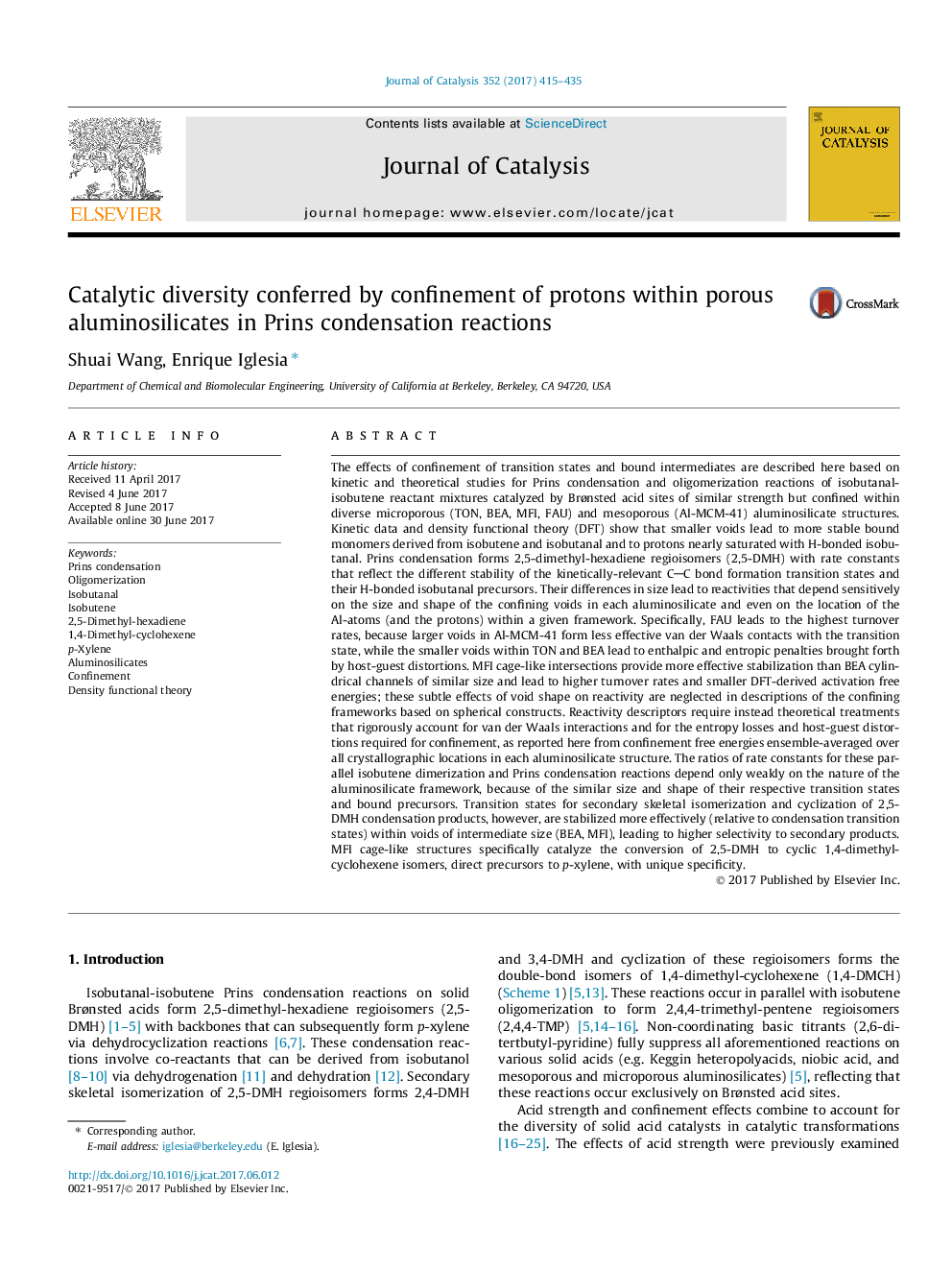| کد مقاله | کد نشریه | سال انتشار | مقاله انگلیسی | نسخه تمام متن |
|---|---|---|---|---|
| 6455424 | 1419757 | 2017 | 21 صفحه PDF | دانلود رایگان |
- CC bond formation steps limit Prins condensation and oligomerization reactions.
- Confinement preferentially stabilizes transition states in voids of intermediate size.
- Smaller voids lead to enthalpic/entropic penalties through host-guest structural distortions.
- Larger voids cause ineffective van der Waals host-guest contacts.
- MFI intersections show a unique selectivity to cyclization of 2,5-dimethyl-hexadiene.
The effects of confinement of transition states and bound intermediates are described here based on kinetic and theoretical studies for Prins condensation and oligomerization reactions of isobutanal-isobutene reactant mixtures catalyzed by Brønsted acid sites of similar strength but confined within diverse microporous (TON, BEA, MFI, FAU) and mesoporous (Al-MCM-41) aluminosilicate structures. Kinetic data and density functional theory (DFT) show that smaller voids lead to more stable bound monomers derived from isobutene and isobutanal and to protons nearly saturated with H-bonded isobutanal. Prins condensation forms 2,5-dimethyl-hexadiene regioisomers (2,5-DMH) with rate constants that reflect the different stability of the kinetically-relevant CC bond formation transition states and their H-bonded isobutanal precursors. Their differences in size lead to reactivities that depend sensitively on the size and shape of the confining voids in each aluminosilicate and even on the location of the Al-atoms (and the protons) within a given framework. Specifically, FAU leads to the highest turnover rates, because larger voids in Al-MCM-41 form less effective van der Waals contacts with the transition state, while the smaller voids within TON and BEA lead to enthalpic and entropic penalties brought forth by host-guest distortions. MFI cage-like intersections provide more effective stabilization than BEA cylindrical channels of similar size and lead to higher turnover rates and smaller DFT-derived activation free energies; these subtle effects of void shape on reactivity are neglected in descriptions of the confining frameworks based on spherical constructs. Reactivity descriptors require instead theoretical treatments that rigorously account for van der Waals interactions and for the entropy losses and host-guest distortions required for confinement, as reported here from confinement free energies ensemble-averaged over all crystallographic locations in each aluminosilicate structure. The ratios of rate constants for these parallel isobutene dimerization and Prins condensation reactions depend only weakly on the nature of the aluminosilicate framework, because of the similar size and shape of their respective transition states and bound precursors. Transition states for secondary skeletal isomerization and cyclization of 2,5-DMH condensation products, however, are stabilized more effectively (relative to condensation transition states) within voids of intermediate size (BEA, MFI), leading to higher selectivity to secondary products. MFI cage-like structures specifically catalyze the conversion of 2,5-DMH to cyclic 1,4-dimethyl-cyclohexene isomers, direct precursors to p-xylene, with unique specificity.
140
Journal: Journal of Catalysis - Volume 352, August 2017, Pages 415-435
